Table of Contents

Grade 9 Biology
Middle School French: M Putra
Good news for all of my MS French students! Their knowledge and skills in French are increasing day by day.
With the addition of new French vocabulary, expressions and new grammar, I am sure that all students will be more confident in practicing their French, both spoken and written, with people who speak French.
As a French teacher, I really hope that all my students will be able to speak French properly and correctly. Above all, to be able to speak French is to have the willingness and determination to learn and have the courage to practice it.
This month, Grade 6 students are already able to make simple sentences. Grade 7 students are able to make simple conversation about daily life such as greetings, getting acquainted, introducing themselves or family, expressing wishes, ordering food / drinks, etc. Grade 8 students are even more knowledgeable about communicating because of their more developed vocabulary and grammar.
While or current teaching system is online, we keep the quality of the lessons consistent. Students are given homework and assignments to encourage them to continue studying.
Enjoy the photos!
HS Science
8th Grade Physical Science (Ms. Baldwin)
Eighth grade began second semester studying the exciting world of physics! We have studied movement and Newton’s three laws of motion. Students are beginning to see how much mathematics is involved in physics, so they are honing their mathematical skills and applying them to their physical world. Their first lab/activity involved a speed challenge where students measured time and distance with various activities (hopping, walking, walking backwards, speed walking) in order to calculate speed.
9th Grade Biology (Mr. David)
Grade 9 students started semester two with the introduction of cytology. Cytology is the scientific study of cells. The big idea is how cell structures are adapted to their function. Students have previously studied cellular basis of life, cell structure, cell transport, and are currently looking at homeostasis and cells. They have had the opportunity to learn about how the light compound microscope works virtually. Our next chapter is on photosynthesis and students will learn about how plants and other organisms capture energy from the sun to make food.
10th Grade Chemistry (Ms. Baldwin)
Second semester chemistry students have learned about the placement of electrons in atoms. Unit 7 included studying the experiments that revealed the dual nature of light. They also learned the relationship between wavelength and frequency, and were able to calculate light energies. Ask your students how electrons are related to light! Students studied electron configurations, or the pattern through which atoms order their electrons into energy levels, shells and orbitals. The location of electrons is directly related to several properties of atoms including their electronegativities, ionization energies, and radii, all of which can be predicted based solely on their placement on the periodic table. Valence electrons are the electrons involved in bonding, which is the next unit to come.
See also: Grade 4’s Journey into the World of Body Systems
Environmental Science (Ms. Baldwin)
This semester Environmental Science students have been learning about how we deal with our solid waste (trash). Waste in nature is automatically recycled back into the ecosystem. Waste generated by humans, on the other hand, is scattered throughout the environment, often irretrievably. Students have been tracking all the things they throw in the trash, and contemplating ways to reduce that amount or recycle it. They will learn about local efforts in Surabaya to develop a sustainable recycling program and incorporate other methods of sustainable home practices. Then they will learn about products and methods used throughout the world to reduce waste. Although waste is an enormous problem (and is directly connected to other environmental problems), we will finish this unit with the hope that individuals can make a marked difference.
AP Chemistry (Ms. Baldwin)
AP Chemistry is one of the most difficult courses that must be learned entirely online. With fewer hours in the week dedicated to this class, and without lab resources, learning the deeper concepts of chemistry requires individual motivation and determination. AP Chem students have been working hard all year and have displayed the necessary hard work and grit required to succeed. We have an optional (though recommended) after school class on Monday afternoons during which we go over any difficult homework problems, College Board questions, or test questions. Speak to your students about how the class is going, and encourage them to attend the Monday supplemental classes. We have recently finished unit 6 (out of nine) on thermodynamics; three more units will be covered before the AP Test. Hopefully we will have word from the college board soon about what format this will take. Although the class is difficult, it is where the deepest mysteries of our known world can be explained and solved, and where new and different puzzles can help grow the mind and creative process.
AP Physics 1 (Dr. G)
Online learning has been extended indefinitely. Teaching Physics outside the Physics lab has become the norm because of the pandemic. Fortunately, our students are able to learn Physics despite not being to work in a laboratory or classroom. Our students had to use their creativity by using their smartphone as a good video recording device to capture slow-motion videos, for gathering data in a Physics experiment. Recently, they used an online simulation for studying collisions of objects.
The class started strong this second semester. The students are highly engaged and motivated in spite of the extended online learning. Their performance last semester is indicative of how well they have adapted to the online setup and all signs point to another impressive semester. Attendance, in the synchronous classes, continues to be good and the students are on task during the asynchronous classes.
The class has completed Units 1 through 4 and is about to complete Unit 5 on Momentum. The College Board will make an announcement by February regarding the setup of this year’s exams. The class is well on its way to completing the required units for the AP exam. Modifications for the upcoming exam will be helpful for our students. It has been a good start for the second semester and our students are looking forward to completing all of the units and taking the AP exam in May.

AP Biology (Mr. David)
AP Biology students have been studying transcription and RNA processing. Transcription is the process in which an enzyme directs the formation of an mRNA molecule to make proteins on the ribosome. In AP Biology, we impose rigorous tests to support the validity of results. One of these tests is Chi-square goodness-of-fit analysis. Students were given data on the effect of different concentrations of coffee on onion root tip growth and asked to use the Chi-square goodness-of-fit to analyze the data and draw conclusions either to accept or reject the null hypothesis. Students are now preparing for their mock exam and this has involved watching daily lecture videos provided by the College Board, reviewing their notes, and solving multiple choice questions and free response questions in units 1–6. We hope to finish the remaining two units on time so that students will have enough time to review before taking their AP exam in May.









